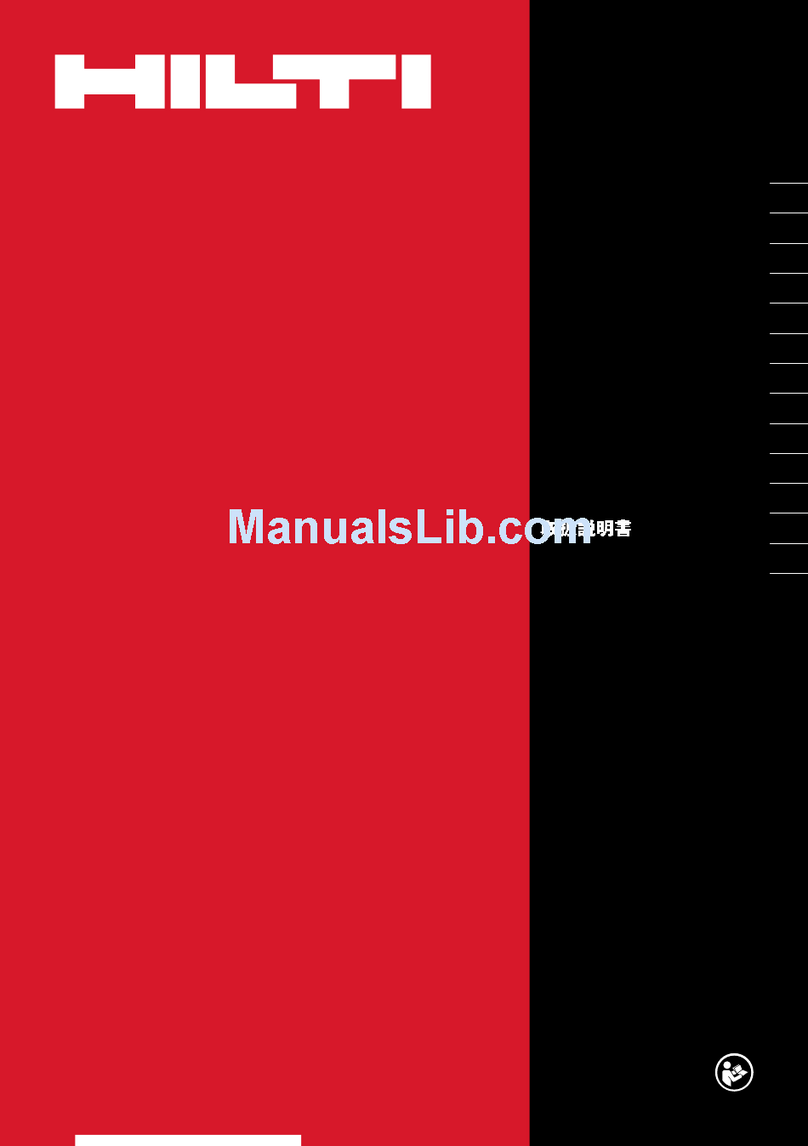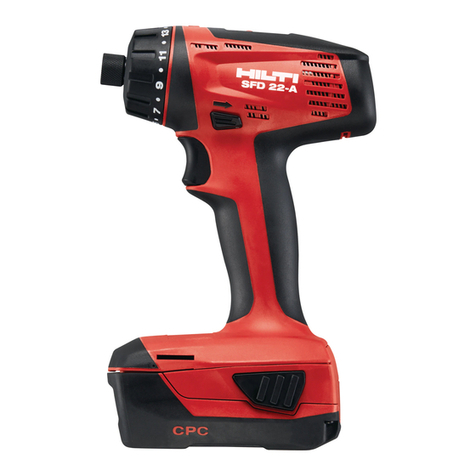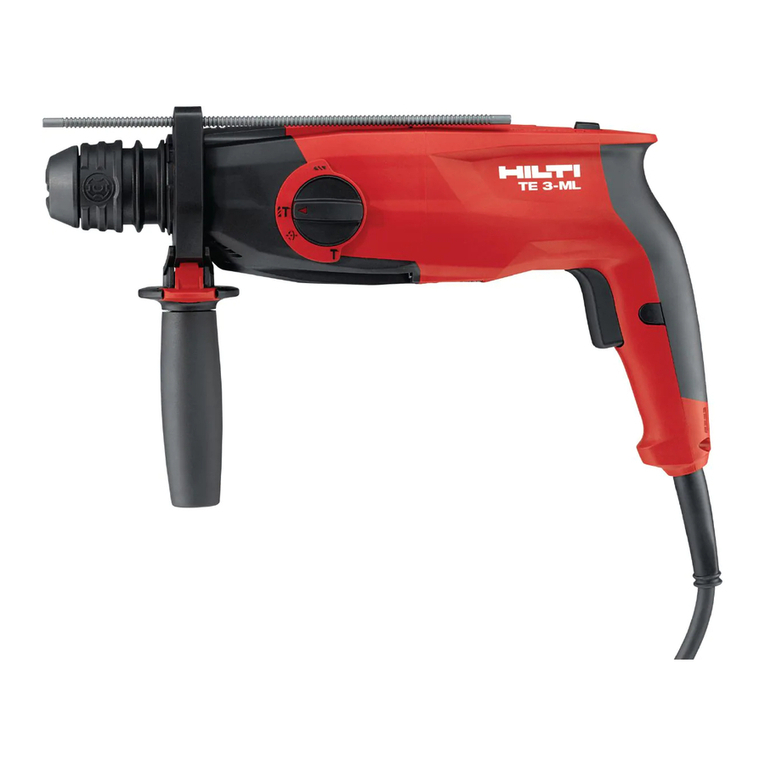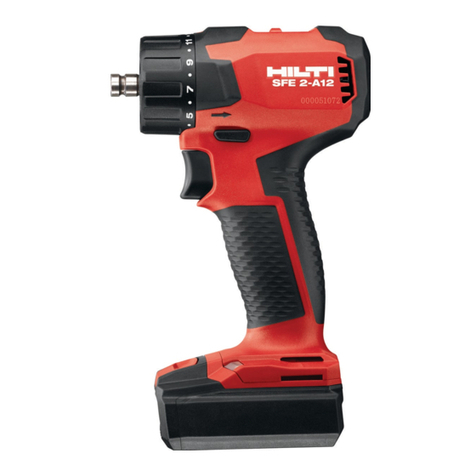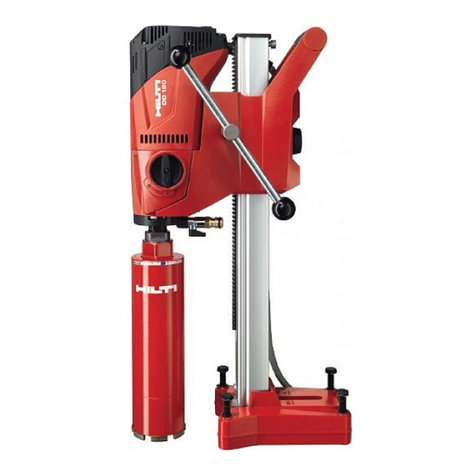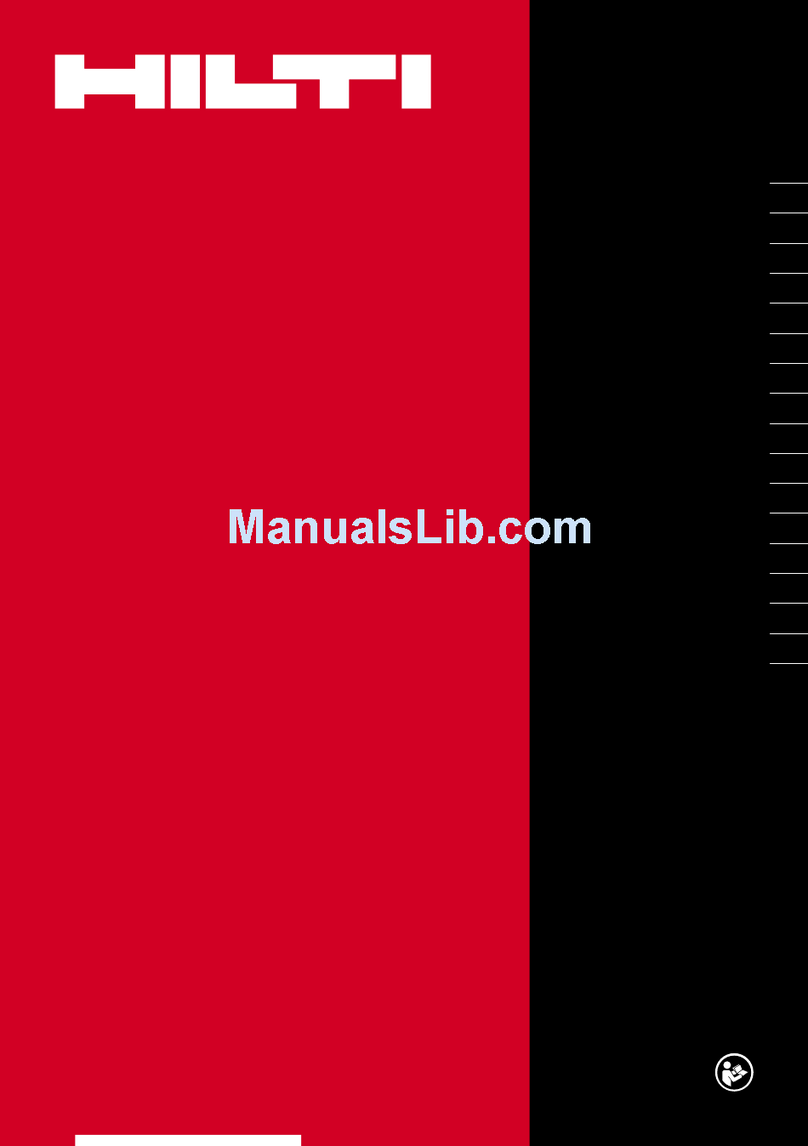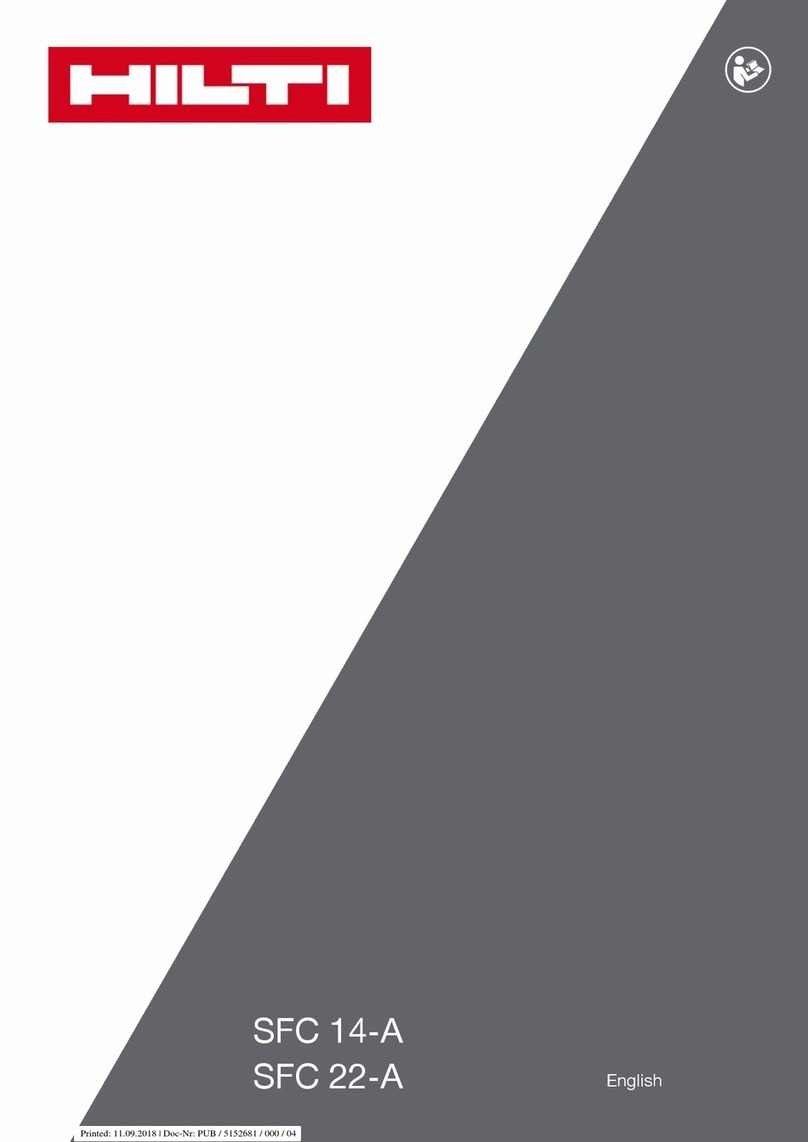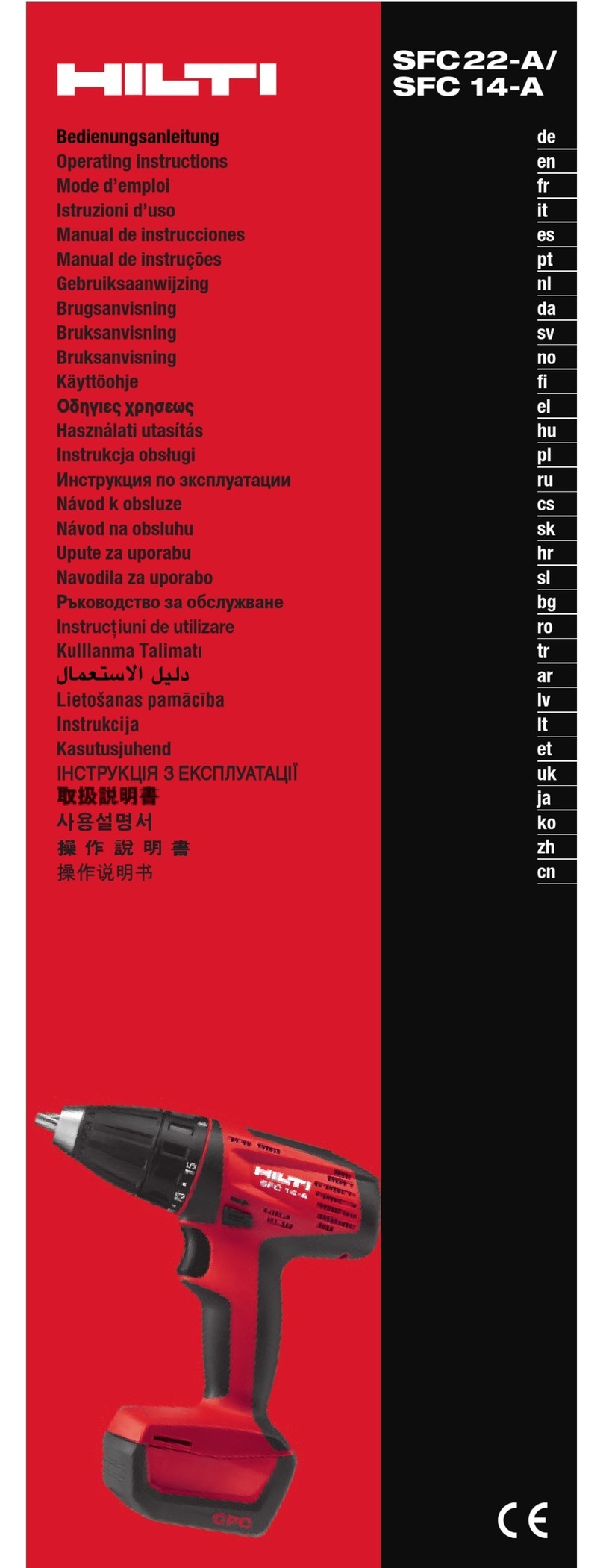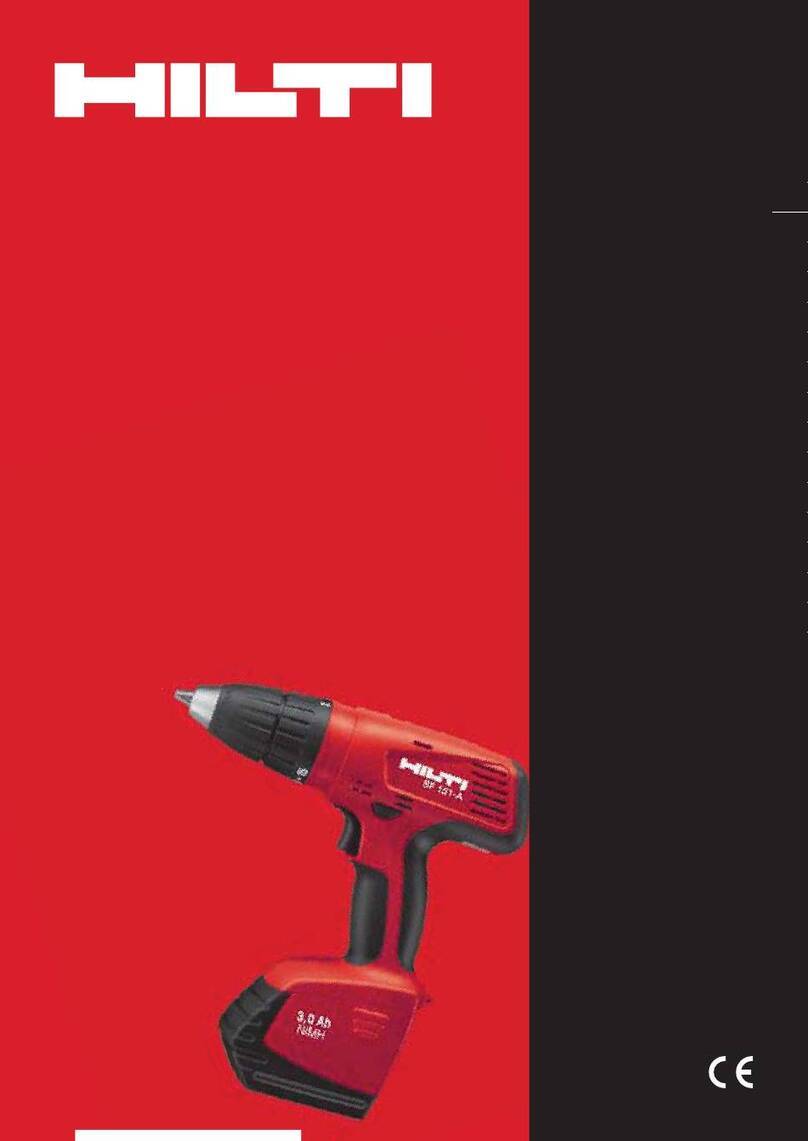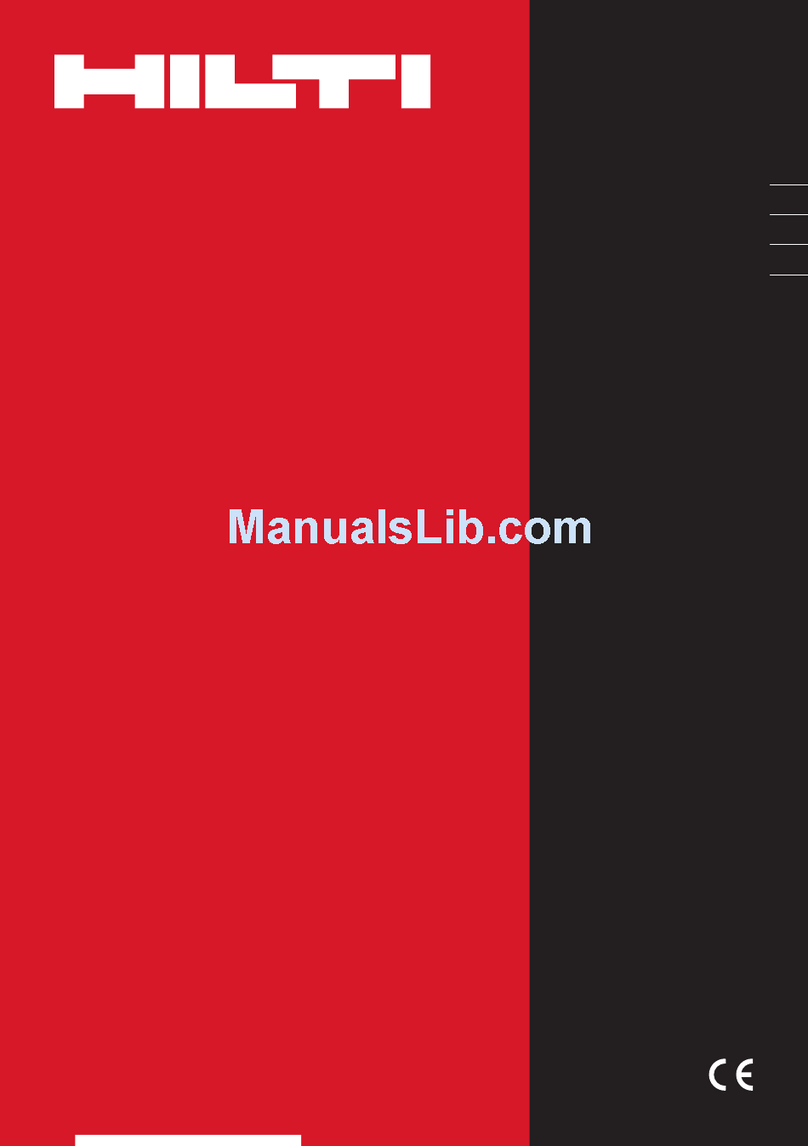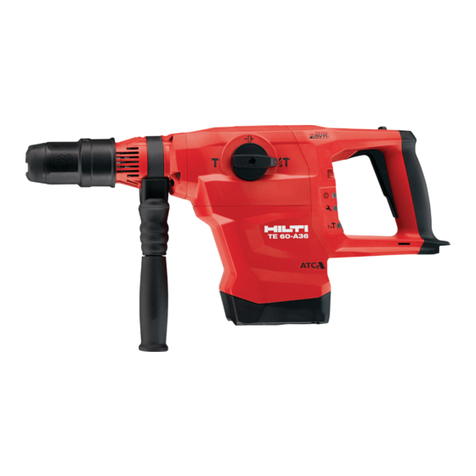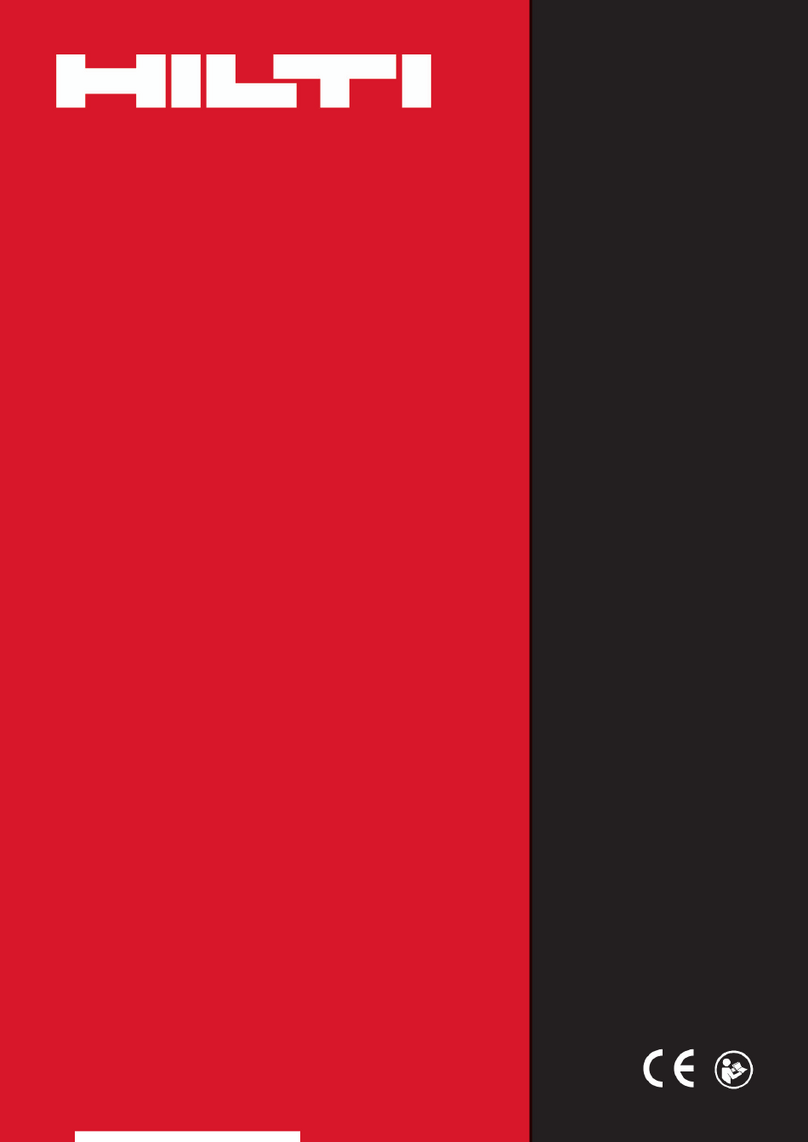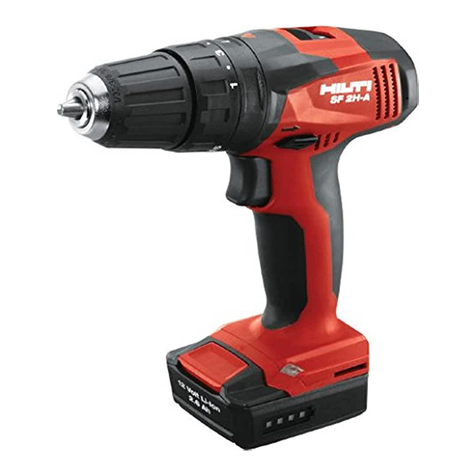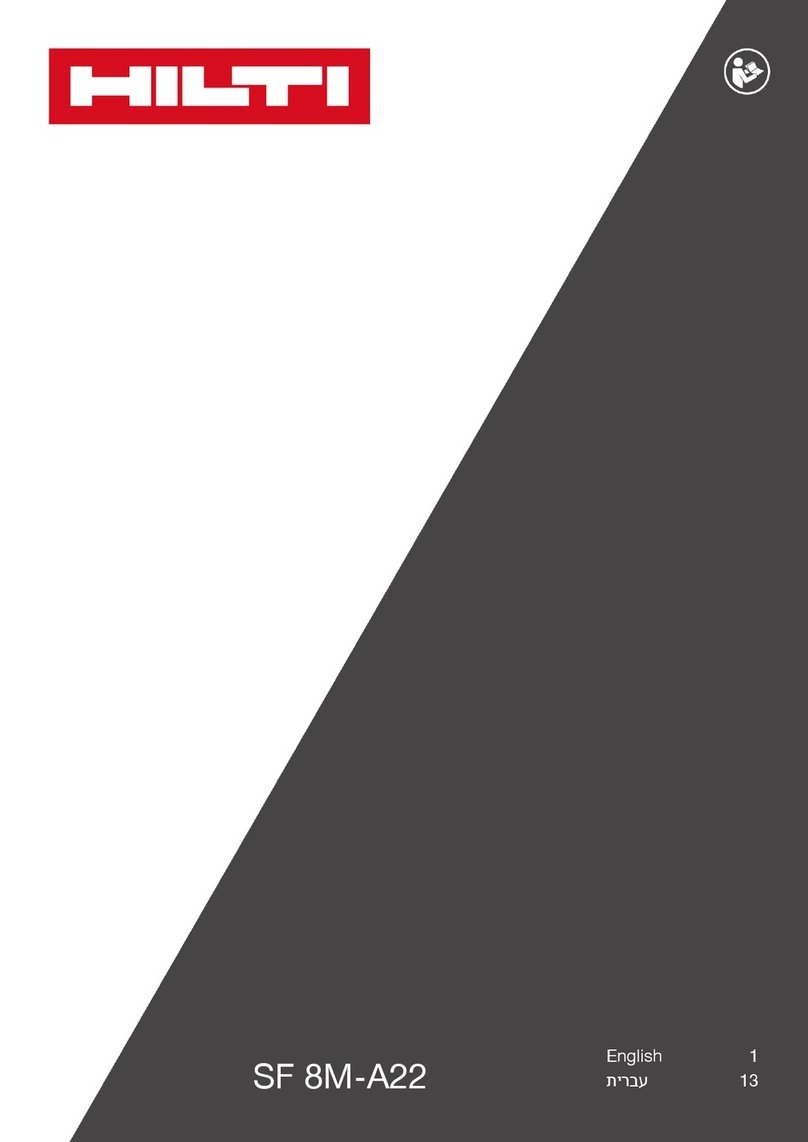4
vided with a means of removing and collecting dust,
check that this is connected correctly and used as
intended.
●To avoid tripping and falling when working, always
leadthe supply cord, extension cord and dust extrac-
tion hose away to the rear.
●Concealedelectric cables or gas and water pipes pre-
senta serious hazard if damaged while you are work-
ing.Accordingly, check the area in which you are work-
ingbeforehand (e.g. using a metal detector). External
metalparts of the tool may become live, for example,
when an electric cable is drilled into inadvertently.
5.3 General safety precautions
●Use the right tool for the job. Do not use the tool for
purposes for which it was not intended. Use the tool
only as directed and when it is in faultless condition.
●Avoid contact with rotating parts.
●Use only the original accessories or ancillary equip-
mentlisted in the operating instructions. Use of acces-
soriesor items of ancillaryequipmentotherthanthose
listedin the operating instructions may present a risk
of personal injury.
●Taketheinfluencesofthesurroundingareaintoaccount.
Donot expose the tool to rain or snow and do not use
itin damp or wet conditions. Do not use the tool where
there is a risk of fire or explosion.
●Keepthe grips clean, dryandfreefromoilandgrease.
●Donot overload the tool.It will work more efficiently
andmore safely within its intended performancerange.
●Do not use damaged insert tools.
●Use only insert tools designed for the application on
hand.
●The side handle must be fitted at all times when the
tool is in use.
●Check that the side handle is securely attached.
●Alwayshold the tool securely with both hands on the
grips provided.
●Whennot in use, the tool must be stored in a dryplace,
locked up or out of reach of children.
●Avoid unintentional starting. Never keep a finger on
the on/off switch when carrying the tool when it is
connectedto the electric supply. Check that the on/off
switchis in the "off" position before plugging the sup-
ply cord into the electric socket.
●Unplugthe tool when it is not in use (e.g. during pauses
betweenwork), before maintenance and before chang-
ing insert tools.
●Switch the tool off before transporting it.
●Take careofyourinserttools.Youwillbeabletowork
moreefficiently and more safely if the insert tools are
kept sharp and clean. Observe the instructions con-
cerning lubrication and changing insert tools.
●Check that moving parts function correctly without
stickingand that no parts are damaged. All parts must
be fitted correctly and fulfill all conditions necessary
for correct operation of the tool.
●Checkthe tool for possible damage. Protective devices
and any parts that may have suffered slight damage
should be checked for correct operation and func-
tionality before further use. Damaged safety devices
orother damaged parts must be replaced or repaired
properlyby an authorized repair workshop unless oth-
erwise indicated in the operating instructions.
5.3.1 Mechanical hazards
●Observe the instructions concerning care and main-
tenance.
●Ensure that the insert tools used are equipped with
theappropriate connection end system and that they
are properly fitted and secured in the chuck.
●Donot leave the key in place on the chuck. Check that
thechuck key and wrenches etc. have been removed
before switching on the tool.
●Wear protective gloves when handling sharp insert
tools in order to avoid cutting your hands or fingers.
●Wear protective gloves when manipulating the side
handleand depth gauge in orderto avoid injury(e.g.
pinching the fingers).
5.3.2 Electrical hazards
●Protect yourself against electric shock. Avoid body
contact with earthed/grounded objects, e.g. pipes,
radiators, cookers and fridges.
●Check the condition of the supply cord and its plug
connections and have it replaced by a qualified elec-
tricianif damage is found. Check the condition of the
extension cord and replace it if damage is found.
●Check the condition of the tool and its accessories.
Do not operate the tool or its accessories if damage
isfound, if the tool is incomplete or if its controls can-
not be operated faultlessly.
●Donot touch the supply cord in the event of it suffer-
ingdamage while working. Disconnect the supply cord
plug from the socket.
●Damagedor faulty switches must be replaced at a Hilti
service center.Do not use the tool if its switch is inop-
erative.
en

